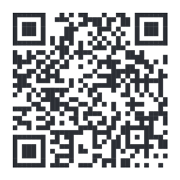Tips For When you Start
- Home
- Women
- Breastfeeding
- Learning to Breastfeed
- Tips for When you Start

With a new baby on the way, you have a lot to think about. If breastfeeding is new for you, you may be wondering how to start. Here are a few tips to keep in mind as you begin this exciting breastfeeding journey with your baby.
Breastfeeding is natural. Your body is made to feed your baby. Your breasts start to change during pregnancy. They are preparing to make milk to feed your baby after delivery. After your baby grows, your milk will change to meet their needs. The amount of milk your body makes will also change. The more often your baby breastfeeds, the more milk your body will make.
Breastfeeding is natural but does take some work. You should plan to focus on breastfeeding in the early days and weeks after delivery. Your baby will be better at removing milk than a pump.


Having a good support system is important to your breastfeeding success.
Making plans and writing them down will help you feel less stressed. Here are a few things to consider:

It may be harder for your baby to latch if they are upset. Crying can be a late sign of hunger. Offer your breast when your baby shows clusters of hunger cues, like:
Some babies will feed from both breasts at each feeding. Other babies only take one. Let your baby finish the first breast if they are still sucking and swallowing. Your baby will let go of your breast when they are finished. Offer your baby the other breast if they continue to show signs of hunger.
Feeding your baby often helps them grow. It also tells your body to keep making milk. The more often your baby breastfeeds, the more milk your breasts will make. Most breastfeeding mothers can make plenty of milk for their baby.


Avoid using pacifiers and bottles for the first few weeks after birth.

It may be harder for your baby to latch if they are upset. Crying can be a late sign of hunger. Offer your breast when your baby shows clusters of hunger cues, like:
Some babies will feed from both breasts at each feeding. Other babies only take one. Let your baby finish the first breast if they are still sucking and swallowing. Your baby will let go of your breast when they are finished. Offer your baby the other breast if they continue to show signs of hunger.


Feeding your baby often helps them grow. It also tells your body to keep making milk. The more often your baby breastfeeds, the more milk your breasts will make. Most breastfeeding mothers can make plenty of milk for their baby.
Avoid using pacifiers and bottles for the first few weeks after birth.


Install this web app on your iPhone: tap ![]() and then Add to Home Screen.
and then Add to Home Screen.
Side-Lying Hold
This hold is useful when:
Cross-Cradle Hold
This hold is useful when:
Clutch or “Football” Hold
This hold is useful when:
Cradle Hold
This hold is useful when:
Laid-Back Hold
This hold is useful when: